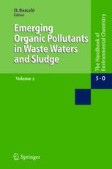Search
Search Results
-
Deep eutectic solvent-treated palm oil mill sludge adsorbents for methylene blue adsorption
This study evaluated the adsorptive properties of deep eutectic solvent (DES)-treated palm oil mill sludge adsorbents for methylene blue removal. The...

-
Treatment of Palm Oil Mill Effluent
Palm oil is one of the two most significant vegetable oils on the global market for oils and fats. Despite its many positive effects on agriculture...
-
Effective removal of pollutants and colour from palm oil mill effluent final discharge using bioadsorbent from palm oil industry
The palm oil industry produces a high amount of palm oil mill effluent (POME) every year, which can potentially cause catastrophic contamination to...

-
The benefits and perspectives of the palm oil industry in Malaysia
Palm oil plantations have rapidly developed over the past five decades in nations with tropical climates due to high demand for the product....

-
Evaluation of Coagulation-Flocculation Treatment Technologies in Palm Oil Effluent Management
Malaysia is one of the prominent crude palm oil-producing countries in the world, with almost up to 20 million tonnes in the year 2015 (MPOB, 2015)....
-
Dephenolization of palm oil mill effluent by oil palm fiber-immobilized Trametes hirsuta AK04 in temporary immersion bioreactor for the enhancement of biogas production
The dephenolization of palm oil mill effluent (POME) with oil palm fiber-immobilized Trametes hirsuta AK 04 was conducted in a temporary immersion...

-
Investigating Palm Oil Mill Effluent Furnace Heating Pre-treatment for Biogas Production
This study evaluates the furnace heating pre-treatment of palm oil mill effluent (POME) for biogas production by measuring the amount of biomethane...
-
Anaerobic treatment of ultrasound pretreated palm oil mill effluent (POME): microbial diversity and enhancement of biogas production
In this study, palm oil mill effluent (POME) treated by ultrasonication at optimum conditions (sonication power: 0.88 W/mL, sonication duration:...

-
Evaluating the biomethane potential from the anaerobic co-digestion of palm oil mill effluent, food waste, and sewage sludge in Malaysia
The ever-increasing organic waste generation in Malaysia is a significant contributor to greenhouse gas (GHG) emissions. However, organic wastes can...

-
Technology-based comparative life cycle assessment for palm oil industry: the case of Nigeria
Oil palm dominates global oil production, trade, and consumption. Nigeria is one of the leading palm oil producers and consumers. A significant...

-
Application of Box-Behnken design to mineralization and color removal of palm oil mill effluent by electrocoagulation process
In this study, palm oil mill effluent (POME) was treated using electrocoagulation, whereby the influencing factors including voltage, electrolysis...

-
Phytotoxicity and Cost-effectiveness Analysis of Palm Oil Wastewater Treated with Magnetic Cationic Starch Flocculant
Toxicological issue on wastewater treated with conventional and starch modified with synthetic cationic monomers flocculants has become a major...

-
The Potential of Oil Palm Frond Biochar for the Adsorption of Residual Pollutants from Real Latex Industrial Wastewater
Oil palm fronds (OPF) were used to prepare biochar products using slow pyrolysis in a top-lit updraft furnace at 438 °C under oxygen-limited...

-
Date Palm Byproducts for Green Fuels and Bioenergy Production
The annual products of pruning of date palms are predominantly treated as waste: either open-field burnt or sent to landfills. The date palm leaves...
-
Industrial Sludge as Adsorbent for Wastewater Treatment and Reclamation
A drive for alternate uses for industrial sludge has been sparked by the implementation of more severe legislation governing the disposal and...
-
Organic Compounds in Paper Mill Wastewaters
This chapter is focused on the problem caused by the effluent discharges from paper and pulp mills. At present, three aspects should be considered in...
-
Palm Oil Industry—Processes, By-Product Treatment and Value Addition
The palm oil industry has continued to grow in Malaysia and worldwide. It provides job opportunities to at least 3 million people along its...
-
Research trends and prospects for hydrogen production from sludge fermentation: based on bibliometric analysis
There are many applications for the technology of producing hydrogen from organic waste. Due to its large volume, high organic content, and stable...

-
Suspended Solid Removal of Palm Oil Mill Effluent Using Horizontal Roughing Filter and Calcinated Limestone
Severe environmental pollution could occur in water bodies which serve as the discharge sites for improperly treated palm oil mill effluent (POME)....

-
Structural Relationship Between Techno-finance and Waste Management Treatment (WMT) for Re-designing Sustainable Production
The structural relationship between waste management treatment indicators and technology has increased sustainable palm oil production, but financing...
